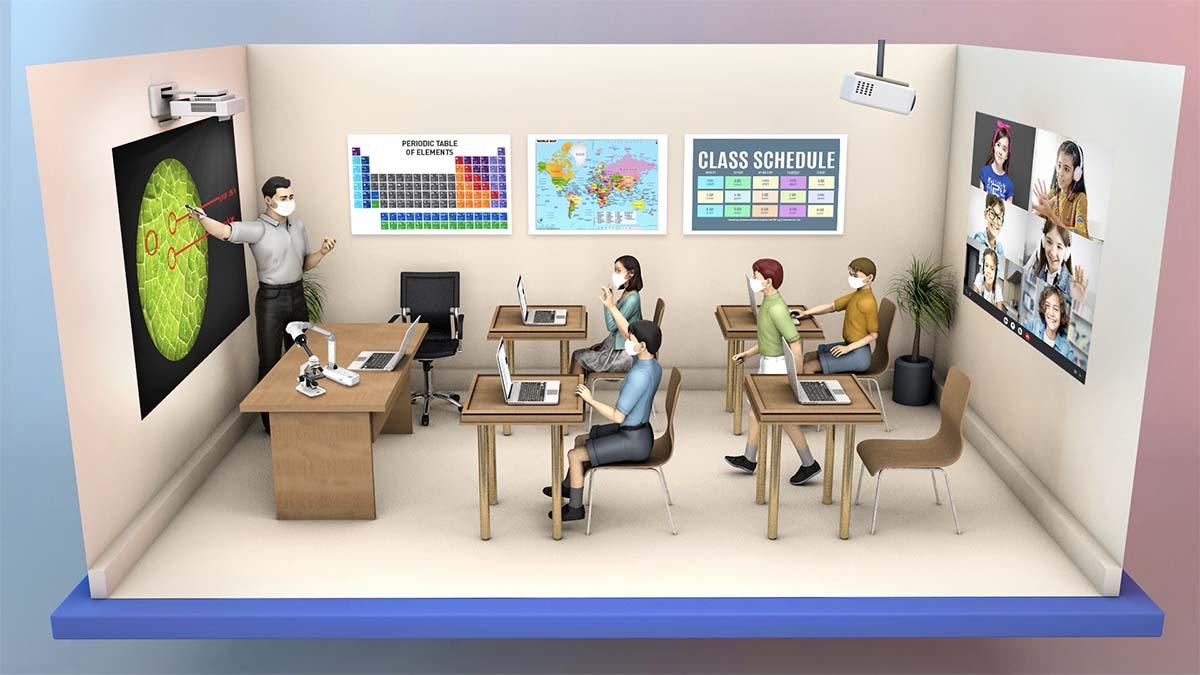Hybrid Classrooms: Key Strategies for Designing Flexible Learning Environments
In today’s educational landscape, the concept of hybrid classrooms has emerged as a game-changer for schools, colleges, and universities seeking to blend in-person instruction with remote learning. This article will explore essential strategies for designing flexible learning environments that foster engagement, inclusivity, and personalized learning experiences.
Introduction: What Are Hybrid classrooms?
Hybrid classrooms are dynamic learning spaces that combine traditional face-to-face teaching with online educational tools and resources. This flexible approach provides students the possibility to participate in class both physically and virtually, making education more accessible. With the rapid rise of digital technologies and the need for scalable, resilient teaching models, designing hybrid classrooms has become crucial for educators worldwide.
The Benefits of Flexible Hybrid Learning Environments
Transitioning to hybrid classrooms offers numerous advantages for both students and educators. Here are some of the most important benefits:
- Accessibility: Hybrid learning eliminates barriers by allowing students to join classes regardless of their location, broadening access to quality education.
- Personalization: Teachers can tailor learning materials and activities to suit individual needs, supporting differentiated instruction.
- Engagement: The interactive nature of hybrid classrooms combines the best of online and in-person learning, boosting student motivation and collaboration.
- Resilience: In the face of disruptions (such as pandemics or weather events), hybrid models ensure learning continuity.
- Collaboration: Students engage with peers and instructors via multiple channels, building essential teamwork skills needed in modern workplaces.
Key Strategies for Designing Flexible Hybrid classrooms
Creating a accomplished hybrid learning environment requires thoughtful planning, strategic technology integration, and ongoing support. Consider these proven strategies:
1. Invest in Advanced Classroom Technology
- Interactive Whiteboards: Facilitate seamless sharing and discussion among in-person and remote students.
- Audio-Visual Tools: Use high-quality cameras and microphones to guarantee clear dialogue and engagement for everyone.
- Learning Management Systems (LMS): Platforms like Canvas, moodle, or google Classroom serve as digital hubs for resources, assignments, and feedback.
2. Redesign Physical Spaces for Versatility
- Moveable Furniture: Modular desks and chairs allow the space to adapt quickly to different activities and group sizes.
- Blended Workstations: Set up areas for both collaborative projects and autonomous remote work,maximizing student autonomy.
3. Implement Inclusive Teaching Practices
- Universal Design for Learning (UDL): Offer multiple means of engagement,portrayal,and expression to accommodate diverse learners.
- Regular check-ins: Foster student well-being and progress regardless of physical location with weekly feedback and support sessions.
4. Utilize Asynchronous and Synchronous Tools
- Video Conferencing: Tools like Zoom or Microsoft teams help maintain real-time classroom interaction.
- Asynchronous Discussions: Forums, blogs, and wikis enable students to participate at their own pace, supporting deeper reflection and understanding.
5. Engage Students with Active Learning
- Flipped Classroom Models: Provide lectures and reading assignments online, then use class time for discussion, problem-solving, and projects.
- Group Projects: Facilitate mixed teams of remote and in-person students to enhance communication skills.
6. Provide Professional Development for Educators
- Offer ongoing training in digital pedagogy, classroom management, and new technology tools.
- Encourage collaboration and sharing of best practices among staff members.
Practical Tips for Successful Hybrid Learning
Implementing hybrid classrooms can be challenging. Here are some actionable tips to help educators and administrators:
- Set Clear Expectations: Communicate guidelines for student participation, etiquette, and assessment in hybrid settings.
- Monitor Student Engagement: Use analytics and feedback tools to track participation and adjust teaching strategies as needed.
- Leverage Digital Resources: Incorporate multimedia, simulations, and interactive assessments to enhance learning content.
- Foster Community: Promote peer-to-peer interaction and social connections, both online and in-person, to prevent isolation.
- Solicit feedback: Regularly ask students about their hybrid classroom experiences and make improvements accordingly.
Case Studies: Hybrid Classrooms in Action
Examining real-world examples highlights the impact and versatility of flexible learning environments:
University X – Adaptive Hybrid Learning
At University X, computer science faculty redesigned lecture halls with digital screens and collaborative software. Students could choose to attend lectures in person or join virtually. attendance rates increased by 20%, and engagement soared due to diversified lesson formats and active participation.
Primary School Y – blending Classroom and Home Learning
Primary School Y introduced a hybrid model for grades 3–6, allowing students to work on reading and math assignments both at school and from home. Teachers observed improved test scores and student confidence, as learners could revisit materials and engage in group activities during live video sessions.
first-hand Experience: Educator Insights
Many teachers share positive experiences about hybrid classrooms,describing how flexibility fosters creativity and deeper connections with students:
“Creating a flexible learning environment transformed my classroom.Students felt empowered to manage their own learning,and our blended discussions led to richer,more thoughtful conversations. The key was finding a balance between technology and personal connection.”
— Sarah T., High School Mathematics Teacher
Teachers also stress the importance of ongoing support, reliable technology, and building trust among students in mixed environments.
Conclusion: Embracing the Future of Education
designing flexible hybrid classrooms is essential for meeting the demands of modern learners. By leveraging advanced technology, inclusive teaching practices, and ongoing professional development, educators can create engaging, accessible, and resilient learning environments.
As schools and universities embrace blended models, ongoing evaluation and adaptation will ensure that hybrid classrooms continue to deliver high-quality, equitable education for all. Start implementing these key strategies today, and experience the transformative impact of flexible learning environments in your institution.

